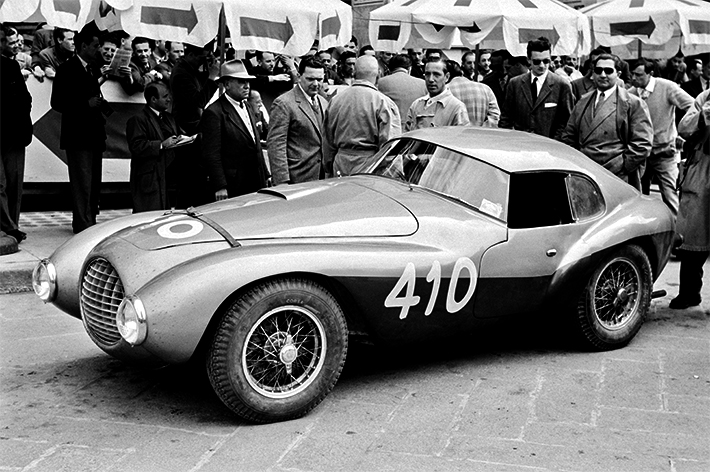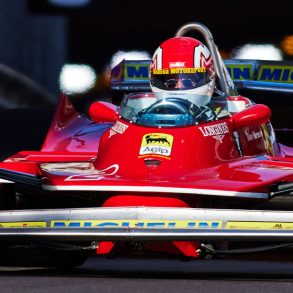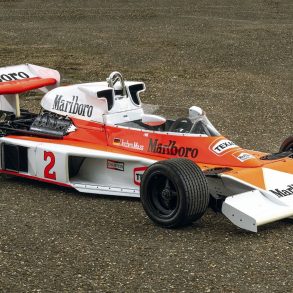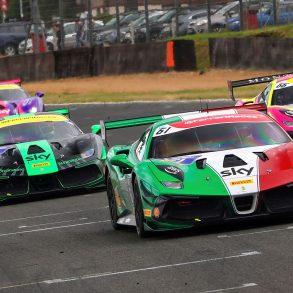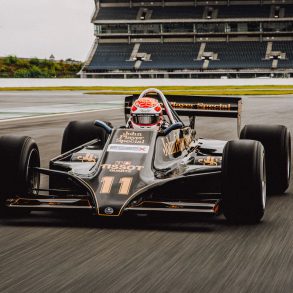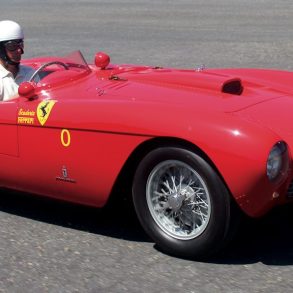Horribly Beautiful
The story of the Mille Miglia begins in 1921 when the Auto Club di Brescia organized the first Italian Grand Prix. Seeing the success of this race the much larger Automobile Club of Milan built the Autodromo Nazionale Monza and had the 1922 Italian Grand Prix held on their new course. This outraged the people of Brescia but it was not until 1926 when Aymo Maggi conceived the idea of a road race for sports cars that they were able to exact some measure of revenge. This race run over a 1000-mile course of closed public roads traveled from Brescia to Rome and back again. These were one thousand sometimes desperate miles lined with cheering crowds just inches from the cars such that horns would blare, lights would flash and even an occasional twitch of the car’s rear end was required to convince the gathered throng to make way.
Racing through this corridor of brick and human flesh, across centuries old bridges and narrow lanes took a special skill that would prompt Enzo Ferrari to declare “No driver could ever say that he had achieved his victor’s laurels if he had not won at Brescia.” The Mille Miglia was an Italian party that only the German Rudolf Caracciola and the Englishman Stirling Moss were able to crash. More than a race it was a mad dash through Italy with cars leaving the starting point at Brescia in 1 minute intervals. The number on the car corresponding to its departure time. The cars were released in reverse order to their expected performance so that during the whole of the race the more powerful cars were hunting down their less powerful adversaries. The great Tazio Nuvolari remarked that driving the Mille Miglia was like drinking an exotic cocktail: “You might not be able to name all of the ingredients, but once you have sampled it, you could never forget its taste. “
Sprinkled amongst the professional drivers were well-heeled amateurs none more prominent than the Marzotto brothers. Heirs to a large textile factory these brothers had the funds to acquire the best cars and at that time this meant Ferrari. In 1950 one of the brothers, Giannino won the event while wearing a double-breasted suit of the finest material, befitting his family’s wealth, becoming its youngest winner. Giannino Marzotto, all of 22 was not shy about complaining to Ferrari about the heaviness and poor aerodynamics of the available cars. Ferrari responded somewhat imperiously that his cars were the most efficient in the world. The young Marzotto decided that for 1951 he would improve upon last year’s Ferrari with an all-new design of his own based on the Ferrari 166 with a 212 engine. In those days before the widespread use of wind tunnels in auto racing builders based their designs on what Marzotto called “optical intuition”. Italy of course is renowned for it’s coachbuilders and for his new car he turned to Sergio Reggiani & Paolo Fontana of Padua. A low slung body with a rounded shape similar to that of an egg or Uovo in Italian was decided upon.
The plan call for two cars, a coupe and a spider. The coupe’s body was constructed using braced box tubes and covered with Puraluman a. type of Duralumin which contributed to weight savings of around 200 pounds. A steeply raked front windshield was designed that surprisingly offered freedom from irritating reflections. In the rain it was a different sort of animal. At speed in heavy rain the wipers lost contact with the windscreen making them useless. Adding to the driver’s excitement visibility returned when exceeding 100 mph due to the resultant air pressure clearing the glass. The Uovo’s tall radiator was actually the result of the desired radiator not being delivered by Ferrari in time. This caused the bonnet to be 15 cm higher than originally envisioned. With the driver sitting further back than usual the car exhibited a pronounced oversteer under throttle. Marzotto with typical understatement described its handling as “frisky”.
After some testing in the nearby mountains the intrepid brothers went to Maranello to show their Uovo to Ferrari. Their meeting did not go well. Ferrari appeared offended by this perceived challenge from a family of amateurs. The fact that they were well-healed customers did not lessen his derision and he promptly informed the Marzottos that he would enter a car in Sicily driven by Taruffi to defend the colors of the Cavallino. This only served to stiffen the brothers resolve. At the Giro di Sicilia Giannino, driving the coupe, opened a lead of 20 km over the second place car. At Messina he felt the rear axel tighten up and glancing out the rear window he mistook the glare for a fire brewing at the rear. Jumping out of the car he found the problem was only a loose differential incorrectly attached by the Ferrari mechanics back at the factory. While dismayed at losing the race he was heartened to learn that it was his brother, Vittorio who had won driving the spider. He contacted Ferrari the following Monday hoping to tweak the old man’s nose. But the legend that is Ferrari would not succumb so easily and the man that Froilan Gonzalez called the Sacred Monster of Motor Sport would simply declare …
“It went as I had predicted, a Ferrari won the race.”
The 1951 Mille Miglia saw a squad of powerful Ferrari 4.1s entered by the Scuderia. Against this formidable opposition was Giannino in his Uovo now fitted with triple carburetors boosting its engine to 186 hp. With its improved aerodynamics and lighter weight it could match the larger cars in overall speed if not acceleration. The Uovo’s one clear advantage was it’s maneuverability. Without pushing his car Marzotto opened a 10-minute lead over the field after the first 600 of 1600 kilometers. Arriving at the outskirts of Senigallia he heard a loud drumming noise coming from the rear. Fearing the possibility of a frozen differential tossing his car into the Italian countryside and himself into immortality he stopped a couple of time to investigate. Checking the tires with his hands in the off possibility that this may be the source of the noise he could feel nothing. Reluctantly he decided to withdraw from the race which was won by Villoresi in one of the 4.1s. Later Marzotto would joke that he only withdrew at that point because Senigallia was famous for its fish broth and fried scampi. The Uovo was loaded onto a truck bound for Modena. It was common for customers to bring their cars back to the factory for maintenance. Marzotto would travel ahead to complain to Ferrari about his differentials. A man of culture and no small amount of self deprecating humor, Marzotto relates what happened after the race…
Gigi Villoresi had been the first across the line at Brescia, but his car was in very poor mechanical shape – not to mention the bodywork. Ferrari patiently listened to my remonstrations until someone told us that the truck with the Uovo had arrived. We accompanied Ferrari to the workshop and I nearly dropped when I saw that the offside tire – the one that I checked personally – sported an enormous rubber blister on its inner wall.
I understood immediately that my fingertips had not reached the point where the thread has come away from the canvas as a result of the high speeds. I could have changed the tire and set off still in the lead in exchange of no more than a few minutes. Ferrari said nothing, but as soon as we got back to his office hepicked up a cylinder barrel and threw it at me. I ducked top avoid the missile and exited with a cheery smile: he had risked losing the race, I had lost it.
Victory would come to the Uovo at its next outing, the Giro di Toscana. In 1953, Giannino Marzotto would return to the Mille Miglia and victory driving one of the Ferrari 4.1s. The Uovo can still be seen at various historic events.
- Marzotto, Giannono. Ferrari World. London: Hyde Park Media Services Ltd., 1996
- Marzotto, Giannono. Red Arrows – Ferraris at the Mille Miglia. Milan: Giorgio Nada Editore, 2001.
- Miller, Petter. Conte Maggi’s Mille Miglia. New York: St. Martin’s Press, 1988


